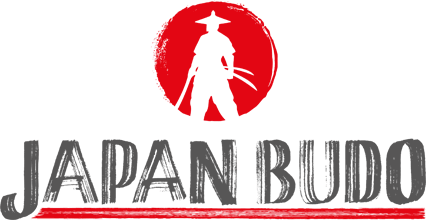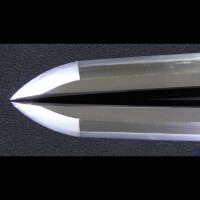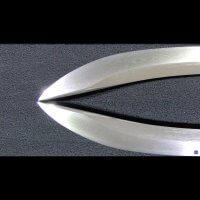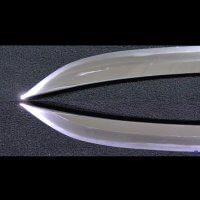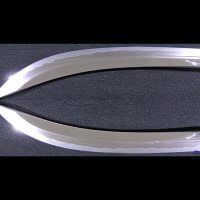Antique naginata
Naginata is one of the oldest pole weapons from Japan.
These historical artefacts are popular as collector's items because they were one of the most respected weapons in the samurai's arsenal.
Showing all 4 resultsSorted by popularity
Showing all 4 resultsSorted by popularity
Similar to the European halberd, naginata caused fear and terror among enemies.
The long lever made it a very powerful weapon. However, mastering it requires some skill and a lot of practice.
The history and significance of naginata in Japanese martial arts
It is a traditional Japanese long pole weapon system that has been practised in Japanese martial arts for centuries.
The staff weapon consists of a long staff with a curved blade at the end and is used both in close combat and as a ceremonial weapon.
Its history goes back to the feudal era in Japan, when it was used by samurai and warriors as a weapon of battle and defence.
The legend of the Onna-Bugeisha
![]() =Naginata: Does not have a long history in Japanese martial arts, but is also notorious for a special incident.
=Naginata: Does not have a long history in Japanese martial arts, but is also notorious for a special incident.
It is particularly well known in connection with Japanese warriors, the so-called Onna-Bugeisha.
These brave women mastered the art of combat and were respected for their sword fighting skills.
They were particularly skilful with the staff weapon and were in no way inferior to their male colleagues.
Naginata for women are usually slightly shorter than those for men.
Techniques and applications
The naginata is used in a variety of techniques and styles within the Japanese martial arts.
The basic techniques include punching and striking techniques, blocking and evasive manoeuvres as well as footwork and posture.
Advanced practitioners can also learn more complex techniques that are specifically designed for use in combat.
The production of naginata
The production requires craftsmanship and precision.
The blades are traditionally made from Japanese Tamahagan steel and carefully forged to ensure optimum sharpness and durability.
The blade resembles Sword bladesbut are more massive. Naginata blades were therefore also made by swordsmiths.
Some fighters also mounted the massive blades with a more or less normal sword handle. These sword-like weapons are known as nagamaki.
They have a much longer shaft than normal swords in order to be able to control the massive blades.
The stick of a naginata is usually made of sturdy wood to ensure a stable structure.
Where you can learn and practise using these weapons
If you are interested, you can find schools and dojos in many parts of the world that offer courses and training sessions.
It is partly a sub-discipline in some sword schools. However, it is also practised as a completely separate martial art.
In these schools, beginners can learn the basics of naginata and improve their skills under the guidance of experienced instructors.
Through regular training and commitment, practitioners can refine their techniques and develop a deep understanding of the art of samurai.
Conclusion: The fascination for an element of traditional Japanese martial arts
Overall, mastering the naginata is a fascinating and versatile challenge within the Japanese martial arts, which has both historical and cultural significance.
The elegance and power of the techniques fascinate not only martial arts enthusiasts, but also people who are interested in traditional Japanese weapons and culture.
By studying and practising with the ancient staff weapon, practitioners can not only improve their physical skills, but also develop values such as discipline, endurance and respect.
Immerse yourself in the world of naginata and experience the beauty and power of this unique Japanese martial art.
If you would rather concentrate on the theoretical aspects of this impressive weapon and are looking for an interesting collector's item, you will of course also find what you are looking for here!
